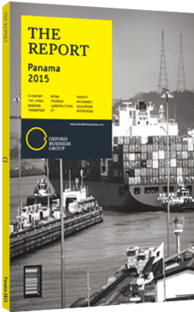Ramón Arosemena, Minister of Public Works: Interview

Interview: Ramón Arosemena
Public debt rose to $18.23bn at the close of 2014, up by 16% year-on-year. To what extent has overspending on infrastructure contributed to this? How can cost overruns be avoided in the future?
RAMON AROSEMENA: This administration is analysing projects awarded under the previous government and how tenders were awarded. The conclusion is as yet unclear in terms of the conditions that determined bid winners, preventing us from being 100% sure if there was overspending. The only way to be certain is by comparing the costs of projects carried out and assigned during the current administration with those of the past government. Yet overspending is not the real problem; the reasons behind overspending are, and therefore the people in charge of awarding contracts should be investigated.
The most important element in bringing down the cost of projects is having a large number of top-tier bidders, which will increase competitiveness, practicality and the precision of the contractors’ construction methods, diminishing the room for error. The same rules should apply to all bidders. Greater competition brings down prices while assuring the quality of delivery. Furthermore, this administration has removed an advanced payment of 15-20% that used to be paid to contractors prior to beginning works, as the ministry should not be advancing money for work that has not been done.
Does the canal expansion necessitate greater road connectivity between the two coasts?
AROSEMENA: Greater connectivity is certainly needed between the Pacific and Atlantic Oceans. Panama City needs to have more than the one access route to the Pacific it currently has. However, the challenge goes beyond this. Multiple communities, across the country and on both coasts, lack road connectivity to the opposite coast. In addition, it is important to go beyond connecting the Pacific and the Atlantic coasts, and increase inland road connectivity as well.
What steps are being taken to improve inter-modal connectivity in Panama?
AROSEMENA: The ministry will play a key role in this. One of the administration’s main projects in this area is to build a fourth bridge that crosses over the canal. This will include six lanes – three in each direction – and two monorail lines. This is part of this government’s effort to better connect all means of transport, and ultimately benefit Panama’s logistics industry. By building a fourth bridge, traffic coming from both sides of the canal will be segregated, making road transportation more time-efficient.
How are sanitation services being improved?
AROSEMENA: There is an obvious need to improve the system. The most important pipes, which are often old and in poor condition, are laid out under highly transited urban areas. The ministry is in permanent coordination with the National Institute of Aqueduct and Sewage Systems to evaluate and fix pipes that burst and damage asphalt. These efforts require daily monitoring of where both institutions are working and what needs immediate attention.
What role will the private sector play in large infrastructure projects up to 2019?
AROSEMENA: Historically, Panama’s government has not had the capacity to carry out large infrastructure works on its own, and the private sector, through large contractors, plays a key role in designing and implementing them. Therefore, the government must guarantee that the adequate conditions to avoid work delays are determined, and that these works are carried out within a budget. It is also important to point out that, given the size of the country, there is a lack of large local contractors, so Panama needs to attract larger foreign contractors to participate in the development of the country. A way of doing this could be the enhancement of public-private partnerships with both local and foreign contractors.
You have reached the limit of premium articles you can view for free.
Choose from the options below to purchase print or digital editions of our Reports. You can also purchase a website subscription giving you unlimited access to all of our Reports online for 12 months.
If you have already purchased this Report or have a website subscription, please login to continue.

